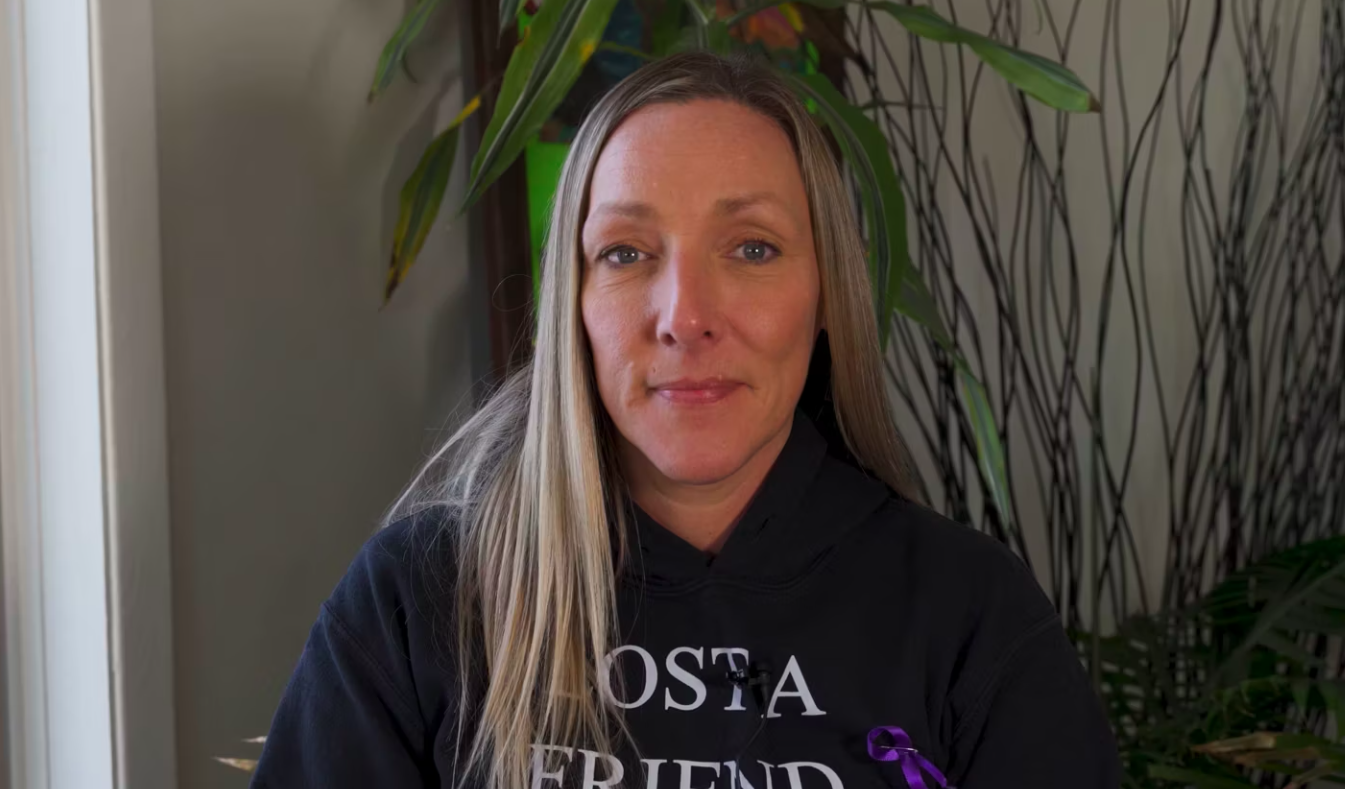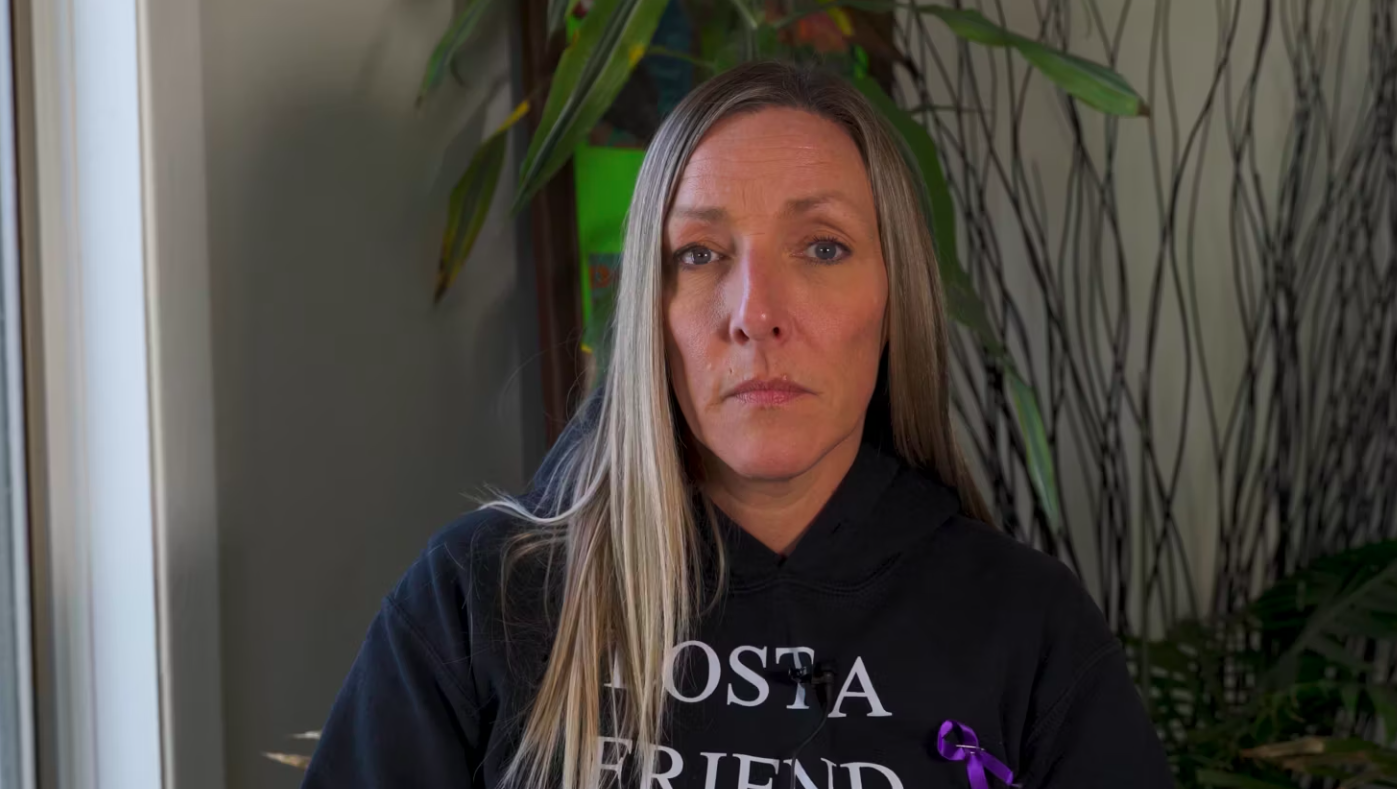Posts Tagged ‘Professional’
Kristal – Attending Memorials as a Support Worker
Kristal – Attending Memorials as a Support Worker
Kristal discusses the importance of finding ways to honour people that have been lost and how they have impacted you. She speaks to how she often chooses not to attend public memorials for those she has lost as a support worker as they are often very overwhelming. Instead, she has her own personal rituals or ways of honouring those she has lost personally including opening a window. She discusses how this practice was used when she worked in palliative care.
Nicole – Advice for Other Professionals Managing Grief
Nicole – Advice for Other Professionals Managing Grief
Nicole discusses dealing with repeated loss while working in community outreach, not being afraid to be human.
Nicole – Working in Community Outreach
Nicole – Working in Community Outreach
Nicole discusses her work in community outreach and how she has lived experience with addiction and living rough.
There One Day and Gone the Next : Art Therapy and Grief
By Sarah Smith DTATI, BFA
Over the last 12 years or so, I’ve had the opportunity to work with those grieving individually and in group settings, which has provided me with experience and insight into how art therapy (and art as therapy) can be beneficial to those dealing with loss.
What is Art Therapy?
“Art therapy combines the creative process and psychotherapy, facilitating self-exploration and understanding. Using imagery, colour and shape as part of this creative therapeutic process, thoughts and feelings can be expressed that would otherwise be difficult to articulate,”(CATA, 2022).
There’s no right or wrong in art therapy, it’s a matter of using the art as a vessel for wellness along side a trained professional. There are many benefits one can receive from engaging in the art making process such as: healthy coping strategies, insight, emotional stability/balance, stress /anxiety reduction, grounding of emotions, pleasure/joy, creativity, safe space, expression, control, freedom, and connection among many others!
Art Therapy and Grief
Grief is a very layered and challenging thing that is unique for each individual who experiences loss.
Because there is no “proper” way to grieve, art therapy can make for an excellent coping strategy as it allows for each person to express themselves in the way that’s best for them.
Unlike traditional “talk therapy”, art therapy has the art, so this means that one does not need to speak if they don’t want to or if they cant find the way to articulate how they feel into words. Sometimes, while people are grieving they cant even pin point how they feel and at other times the emotions can just be so overwhelming it can affect one physically and to try and talk about the emotions just exacerbates them.
Creating art in itself can be a healing thing. It can be a fun or relaxing thing to do. Engaging in an art therapy session can allow for so many more benefits. The art therapist can provide the participant with specific art therapy directives and art materials that they feel may be beneficial to your needs. Art therapists are trained to read and assess clients’ artwork. This means they may see things you may have missed that you might benefit from if brought to your attention. This insight makes it a great learning tool for self-discovery. We as art therapists believe that the art work holds the subconscious. What’s great about this for those who are grieving is that people can process however they need to. Some people need more time to process, some people need a more gentle approach where they feel in control, some people refuse to acknowledge things, and some people are just going through the motions and engaging in the art making process. The subconscious is purging and the healing is happening whether they realize it or not.
Art Therapy Directives (examples)
I facilitated a workshop at a hospice a couple years ago and offered it to those who had lost a loved one. The workshop began with a few art therapy warm-up exercises with the intention of helping everyone feel a bit more comfortable in the space and with each other.
The first art therapy directive I had them do was make flowers out of coffee filters, markers, and water. I wanted them to make something symbolic for their loved one. They began by writing whatever they wanted onto the coffee filters. Some people wrote the persons name, poems, a memory, or even drew a picture. They then watered down the filters and the colours began to bleed. Some people cried during this part. They could resonate with the symbolism. The water like tears. The bleeding of the colours representing pain, fuzzy memories, and a distant grasp on the person. When the coffee filters had dried we had turned them into flowers. The transformation of taking what we lost and carrying it forward in a new way was very powerful to witness and a very healing thing to say the least.
The second art therapy directive was focused more on the individual rather than the deceased. I gave everyone a mask. I instructed them to paint the front of the mask how they appear to the world and I asked them to create on the inside of the mask to show how they really feel or how they are actually doing (see figure 1).
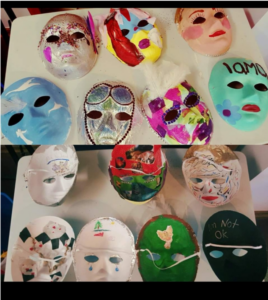
Figure 1.
They shared their art work from the workshop, but it was heavy. They were feeling sensitive and tired among other feelings so I had them sit and talk for a bit and then had them pull a self-care card for a distraction before letting them and drive home, as it may not have otherwise been safe for anyone overwhelmed after such an engaging session. This is typically how I run a grief workshop. Before they left the hospice asked them to fill out a score sheet to see how they felt about participating in the workshop and everyone said they liked it and for reasons, such as that they felt less anxious, they felt less alone, the felt lighter and more hopeful after the workshop.
At another hospice art therapy workshop, I had them create memory boxes. I provided them with a wooden box along with a variety of art materials, the only thing I asked was that they brought in a picture of the person they had lost. The purpose of this was to give them an opportunity to create something that could hold two energies, a place to honour them deceased, but also something tangible for them to have and hold. From my observations, I remember them taking a lot of time on these boxes and they were very quiet while making them. When they shared them, they were emotional, of course, but pride came through, it was like they made them for their people and wanted to make them well, so that their loved one would really like the box. This made them feel good for reasons such as honouring the person still while they are gone. Some people felt that their guilt had been eased a bit because they were physically doing something for that person who was no longer here. To see an example, see figure 2 and 2b.
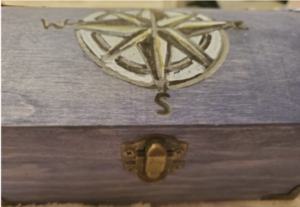
Figure 2
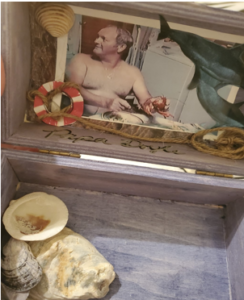
Figure 2b.
Following the memory boxes, I had them paint a step by step painting for their loved one. This was more of an art as therapy approach. This means they were literally using the art itself for wellness. They followed along with me and painted a whole painting. By following me, they were able to safely let go and get lost in the art making process. The intention was to enjoy the process while also giving them a healthy mental and emotional escape for however long it took us to paint the picture. I selected a picture of trees that had no leaves, purposely to symbolize letting go, loss, and reflection but the painting had an element of hope to it, the tress were pointing up to the sky, facing the light and there was lots of colour (see figure 3).
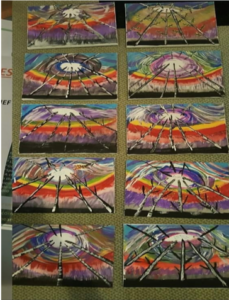
Figure 3.
The photos below are some examples of art from some of my sessions with clients around grief. They speak for themselves.
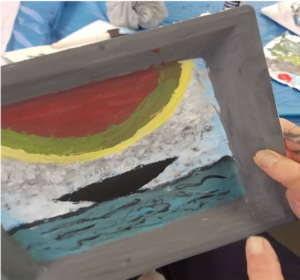
Figure 4.
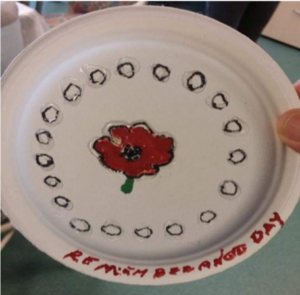
Figure 5.
Grief and Disability: Carrie’s Story
By Carrie Batt, Grief Educator
My son says I am a mover and a shaker. He tells his friends that because of my extensive travels abroad and my volunteering. When his friends ask: “Why did she do that?” he always tells them “Because my mom believes that ‘anything is possible’.” As I look back on my journey, I know where I picked up this motto. When my baby brother was born, the doctors told my parents: “he will not walk, talk, nor know who you are”. From that day on my parents embodied that motto ‘anything is possible’ and in the end my brother does far more than walk and talk. This circumstance introduced me to the disability community knowing that people with disabilities deserve and can do more. Interestingly, I have had the privilege of working within the developmental sector in a variety of positions for more than thirty years.
In 2018, I added to my parents’ motto ‘anything is possible’ and included ‘everyone is worth it’. I added those words to the motto right after I had attended a kintsugi workshop offered by Rami Shami, a prominent member within the deathcare community. As soon as I realized that Rami had spent the last 30 years caring for the dying. I inquired about his experience in death, dying and disability. Rami unfortunately, had no experience in supporting people with a disability who were dying. Upon learning about the sheer lack of support and expertise on this topic, I proceeded to complete the end-of-life training with Beyond Yonder Community Deathcare program. Soon after, SEOL Care was created, which offers a disability-sensitive approach to death, dying, and disability.
It has become clear to me over time that we have much work to do to ensure the delivery of disability-sensitive grief literacy and grief support. In March of 2022 my proposal for four 1-hour sessions was approved, we provided the program for 20 participants. My heart was full in each session.
My heart remains full of hope that conversations, education, and expertise about disability sensitive end of life care and grief support will gain momentum as more and more people join in on this vital conversation.
Currently, there are several rays of hope that suggest grief education and support can and will be offered in a more inclusive way. As a certified grief educator, I now offer online disability-sensitive grief support services for individuals and groups. My employer is offering disability-sensitive grief literacy sessions. The Bereavement Ontario Network has shared information through their newsletter and in a network webinar, where the gentleman I support and I were the guest speakers. Bereaved Families of Ontario have been receiving multiple requests to provide grief resources for the neurodivergent community. Additionally, Bereaved Families of Ontario are seeking out speakers with lived experience related to grief and under-represented communities for their grief literacy series. I remain grateful knowing that these are hopeful times, and these examples are a positive step in the right direction.
Jenn – What does an art therapist do
Jenn – What does an art therapist do
Jenn explains how art therapist use the creative process to help people make positive changes to improve their overall health and to enhance their well being
Jenn – What an art therapist can show us about processing grief
Jenn – What an art therapist can show us about processing grief
Jenn talks about how art can give a form to grief. It can give it shape and texture so it can be seen when it is often so invisible. It can also be messy which so like our grief experience
Maureen – “Peer vs professional support”
Maureen – “Peer vs professional support”
Maureen talks about getting help and what is right for you.
Brenda and Dale – “Seeking Help”
Brenda and Dale – “Seeking Help”
Brenda and Dale discuss how seeing a counsellor helped them. They continue to grieve the death of their son by suicide.
Keith – “Hope”
Keith – “Hope”
Keith talks about time, healing and hope.
Rev. Sky – “Weepies”
Rev. Sky – “Weepies”
Rev. Sky talks about weepies, that they are OK and how to deal with them.
Amanda – “Ministry of Presence”
Amanda – “Ministry of Presence”
Amanda discusses how being present with someone can be helpful.

